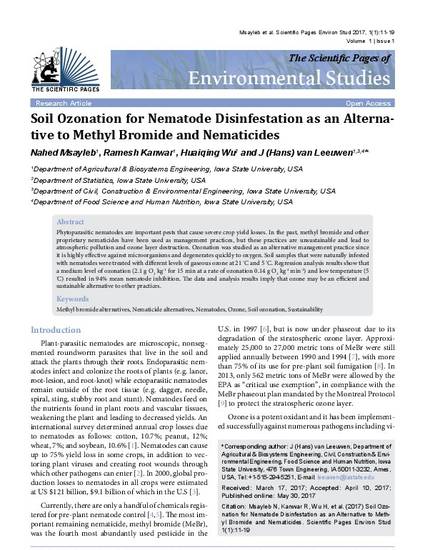
Phytoparasitic nematodes are important pests that cause severe crop yield losses. In the past, methyl bromide and other proprietary nematicides have been used as management practices, but these practices are unsustainable and lead to atmospheric pollution and ozone layer destruction. Ozonation was studied as an alternative management practice since it is highly effective against microorganisms and degenerates quickly to oxygen. Soil samples that were naturally infested with nematodes were treated with different levels of gaseous ozone at 21 ºC and 5 ºC. Regression analysis results show that a medium level of ozonation (2.1 g O3 kg-1 for 15 min at a rate of ozonation 0.14 g O3 kg-1 min-1) and low temperature (5 ºC) resulted in 94% mean nematode inhibition.
Available at: http://works.bepress.com/hans_vanleeuwen/58/

This article is published as Msayleb, N, R.S. Kanwar, J. van Leeuwen, and H. Wu. “Soil Ozonation for Nematode Disinfestation as an Alternative to Methyl Bromide and Nematicides” Scientific Pages of Environmental Studies 1, no. 1 (2017): 11-19. Posted with permission.